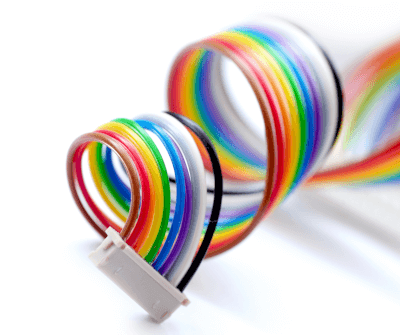What Is a Flat Cable?

A flat cable is a type of cable used for inter-device wiring, consisting of multiple core wires bundled in parallel to form a flat cable.
Each core wire is made of thin conductors coated with resin insulation, and the number of cables varies from about 10 to 100. A flat cable that is relatively narrow in width is sometimes called a ribbon cable.
Since flat cables can send multiple signals at once, they are used to connect devices with parallel interface functions.
Uses of Flat Cables
Flat cables are suitable for parallel interfaces that send multiple signals at the same time. They are used as wiring cables between devices with parallel interface functions, such as computers, peripheral devices, communication devices, and office equipment.
Flat cables are flat, soft, and can be bent for wiring. However, they have the disadvantage of being weak and may cause noise interference. For this reason, they are used for internal wiring of electronic devices such as hard disks, drivers, and boards inside PCs, rather than for wiring to and from external devices.
Characteristics of Flat Cables
There are various types of flat cables, such as bridged, threaded, and twisted pair cables.
The bridge type flat cables are the most common type of flat cables, with each core wire completely fused together.
Sudare flat cables have a structure in which the fusion-bonded and non-fusion-bonded portions of each core wire alternate at regular intervals. The non-fused portions are usually longer and allow for more flexible wiring than the bridge type, making it suitable for wiring in enclosures with complex shapes.
Twisted-pair flat cables have a twisted-pair structure, in which the non-fused portions of the Sudare type are twisted into pairs of two cores each. Compared with the bridge type and the wire of the Sudare type, the twisted pair of flat cables is more resistant to crosstalk and noise from neighboring cores.
There is also a type of cable that is rounded from the Sudare type flat cables and covered with a shield, which is called a round cable. Since round cables are stronger and more resistant to noise than flat cables, they can be used not only for wiring within electronic equipment but also for wiring between external devices.